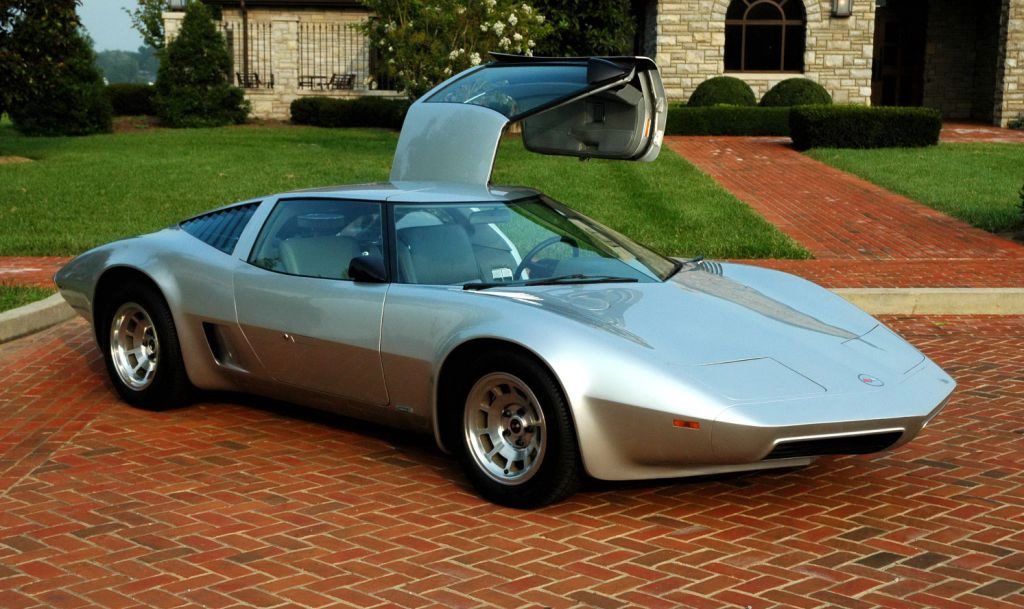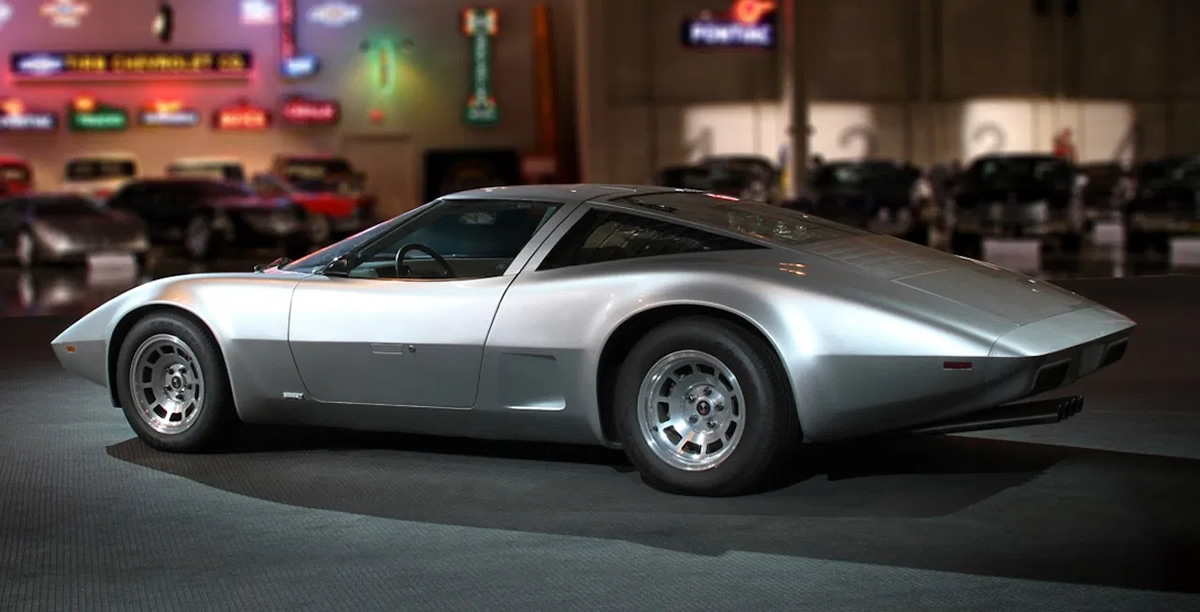Chevrolet Corvette AERO-VETTE
SUBJECT: Chevrolet Corvette AERO-VETTE
TO: The Media
FROM: General Motors Design
General Motors Corporation Technical Center
PRESS RELEASE
CHEVROLET AEROVETTE
An experimental, mid-engine fast-back coupe, the Chevrolet Aerovette, features a 400-cubic inch displacement V-8 engine mounted transversely, an extremely efficient aerodynamic form and computer age cockpit instrumentation.
Finished in gunmetal silver with grey interior, the Aerovette was developed and built by the General Motors Design Staff in co-operation with Chevrolet design and engineering personnel to test high performance, vehicle design and engineering concepts and is not planned for production.
The Aerovette has a steel and aluminum body of birdcage construction with glass fibre skin. Hi-fold gullwing doors with fixed side windows which act as part of the structure are used to reduce body weight.
The deep "V" windshield is angled at 72 degrees and wraps around to the doors concealing the front pillars. The Aerovette was designed with the aid of wind tunnel testing for low drag without excessive aerodynamic lift while maintaining United States bumper height standards.
 |
 |
 |
Engine power is transmitted through a model 425 Hydramatic automatic three speed transmission. A high stall speed torque converter ensures good low end performance.
A fully independent suspension incorporates wishbone type "A" arms in front and longitudinal strut rods in the rear. Telescoping coaxial coil springs and shock absorber assemblies complete the suspension. The steering is rack and pinion. The braking system features discs all around.
Front and rear energy-absorbing bumper systems provide protection for the vehicle in car-to-car impacts up to 10 m.p.h. Glass louvers in the rear quarter area aid in rear vision and help to exhaust heat from the engine compartment. Cool air for carburation is ducted from apertures located forward of the rear wheels. Excess air, after cooling the engine compartment is then extracted through electrically-controlled louvers below the rear window. The radiator for engine cooling and the air conditioner are front mounted.
There is a luggage compartment in the rear. The fuel tank is between structural walls forward of the cowl. Side impact bars and rollover protection are built into the body structure.
An on-board computer system with a compact fully digital display readout located just above the steering column replaces temperature, oil pressure, fuel and voltage gauges, and speedometer. Within the same readout area a linear light emitting diode system indicates engine revolutions per minute. Up to 7,000 r.p.m. is indicated with green lights. Above this number the engine is exceeding its maximum recommended r.p.m. and the tachometer lights are red.
The compact readout panel adjusts up and down with the steering column and wheel enabling the driver to view the instruments without obstruction and without looking away from the road.
An additional digital display of convenience and driving information is located at the front of the center console. One display window serves as the readout of several functions. Information selection is controlled through push buttons located at the front of the center console. They permit the driver to check on time, date, radio, and elapsed time for rallying or acceleration runs.
| VEHICLE DIMENSIONS | ||
|---|---|---|
| Wheelbase | 95.5 inches | 2,425 mm |
| Length | 188.5 inches | 4,780 mm |
| Height | 42.5 inches | 1,080 mm |
| Width | 71.6 inches | 1,820 mm |
| Front/Rear Overhang | 47.0/46.0 inches | 1,195/1,170 mm |
| Front/Rear Tread | 61.2/61.4 inches | 1,555/1,560 mm |
Not part of the above press release:
Curb Weight: 2,200 lbs.
Coefficient of Drag: 0.325
